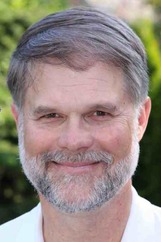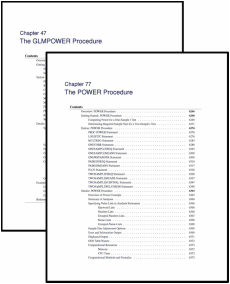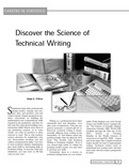About Ralph O'Brien

Excellent statistical software is developed by those who are experts in statistical science, software design, numerical analysis, and programming, and who have adequate time and resources to do quality work.
Why should you trust anything I develop?
I am a statistician who designs research studies across the sciences, analyzes such data and interprets the results, and creates effective ways to communicate all this to the given audience. Moreover, I taught all this for nearly 40 years. Teaching is probably my greatest strength. It is certainly my greatest professional love.
Born and raised in Sacramento, California, I am a proud graduate of "Sac High," the oldest high school west of the Mississippi. My 1971 BA in Mathematics and Economics is from Claremont McKenna College; my MS in Operations Research (statistics, mathematics, economics, and computer science) is from the University of North Carolina, as well as my 1975 PhD in Psychometrics. My doctoral dissertation led to a trio of journal articles that proposed a new method for testing the equality of group variances, one that is quite robust to non-Normality, a bona fide correction and generalization of the still-popular method that Levene proposed in 1960. This came to be called O’Brien’s test for variances and is included in the major statistical software packages SAS and JMP. (I need to develop an Rfunc for this.)
Why should you trust anything I develop?
I am a statistician who designs research studies across the sciences, analyzes such data and interprets the results, and creates effective ways to communicate all this to the given audience. Moreover, I taught all this for nearly 40 years. Teaching is probably my greatest strength. It is certainly my greatest professional love.
Born and raised in Sacramento, California, I am a proud graduate of "Sac High," the oldest high school west of the Mississippi. My 1971 BA in Mathematics and Economics is from Claremont McKenna College; my MS in Operations Research (statistics, mathematics, economics, and computer science) is from the University of North Carolina, as well as my 1975 PhD in Psychometrics. My doctoral dissertation led to a trio of journal articles that proposed a new method for testing the equality of group variances, one that is quite robust to non-Normality, a bona fide correction and generalization of the still-popular method that Levene proposed in 1960. This came to be called O’Brien’s test for variances and is included in the major statistical software packages SAS and JMP. (I need to develop an Rfunc for this.)
From 1975-1982, I was an assistant professor in the Psychology Department at the University of Virginia and was fully approved to become a tenured associate professor in summer 1982. Instead, I became a tenured associate professor in the Department of Statistics at the University of Tennessee, directing that graduate program from 1983-1989. In 1989, in order to concentrate full-time in biomedical applications, I joined the Division of Biostatistics at the University of Florida and directed that unit from 1992-1994. From 1994-2007, I was a Full Staff member (equates to Full Professor) in the Department of Quantitative Health Sciences at the Cleveland Clinic in Cleveland, Ohio. I founded its Collaborative Biostatistics Center (CBC) and served as its Director for nine years before recruiting my own successor. In 2007, I accepted a full professorship in the School of Medicine at Case Western Reserve University (CWRU), which neighbors the Cleveland Clinic and has formal ties with it. My role there soon focused on graduate-level teaching, and I directed the MS Program in Biostatistics within CWRU’s Department of Epidemiology and Biostatistics.

I am probably best known for developing, distributing, and promoting a large freeware module, UnifyPow.sas, which allowed SAS users to easily conduct comprehensive sample-size analyses for study planning. This led to many rewarding speaking invitations sponsored by the American Statistical Association (ASA), including several full-day shortcourses at the Joint Statistical Meetings (JSM) and more than a dozen others held at local ASA chapters throughout the United States. At the 2002 JSM, I was presented with ASA’s “Excellence in Continuing Education Award.”
In time, SAS Institute contracted with me to help them design, build, and extensively document PROC POWER and PROC GLMPOWER, now major components of the SAS/STAT system. See, for example, O’Brien and Castelloe (2007). As a quasi-insider at SAS Institute collaborating primary with Dr. John Castelloe, I observed how SAS's high programming standards yield reliable software backed by excellent documentation and user support. For me, it was like working with top theater professionals to adapt my amateur stage play (UnifyPow.sas) for a major production on Broadway, getting solid reviews, and enjoying a successful run, which still continues. By the way, my thinking about sample-size analysis continues to evolve significantly, as the Rfuncs Project will reveal.
In time, SAS Institute contracted with me to help them design, build, and extensively document PROC POWER and PROC GLMPOWER, now major components of the SAS/STAT system. See, for example, O’Brien and Castelloe (2007). As a quasi-insider at SAS Institute collaborating primary with Dr. John Castelloe, I observed how SAS's high programming standards yield reliable software backed by excellent documentation and user support. For me, it was like working with top theater professionals to adapt my amateur stage play (UnifyPow.sas) for a major production on Broadway, getting solid reviews, and enjoying a successful run, which still continues. By the way, my thinking about sample-size analysis continues to evolve significantly, as the Rfuncs Project will reveal.

In programming, I strive to follow the edicts of Kernighan and Plauger in order to develop code that is technically rigorous as well as lucid: lucidity supports rigor. In writing articles and documentation, creating high-quality prose challenges me more than anyone could know, which is why I studied the principles advanced by Joseph M. Williams, George Gopen, and other writing experts, why I taught courses on communicating in science, and why I once agreed to author an article for statisticians on how to Discover the Science of Technical Writing. In communicating through visualization, I take to Edward Tufte, whose Theory of Data Graphics parallels the same notions of rigor and lucidity.
In 2004, I was elected by the full membership of the American Statistical Association to serve a three-year term on its Board of Directors. This followed my election in 1999 to chair the ASA’s Section on Teaching Statistics in the Health Sciences, which in 2007 honored me with its Distinguished Achievement Award. In 2012, I chaired the ASA’s Section on Statistical Consulting, also an elected position. In 2005, I was inducted as a Fellow of the American Statistical Association, a hugely appreciated honor for someone whose graduate degrees are not formally in statistics or biostatistics.
In 2014, at age 65, I retired from CWRU and moved to coastal North Carolina. While I love playing nice golf courses all year long, I am as "professorially restless" as ever. No one could understand how much I miss regular teaching, just being around excited, gifted, open-minded young researchers who have so much to offer Science. Through the Rfuncs Project, I am refining and freely distributing R functions and associated instructional materials that I produced for my own teaching and consulting over the last decade. Some Rfuncs and examples promote new (better!) ways to understand, apply, and communicate mainstream methods and approaches, such as how to deal simply and correctly with the venerable Wilcoxon-Mann-Whitney two-sample test. I finally have the blocks of time and the professional autonomy to do this with great care, my way. This is how the UnifyPow.sas project began in the mid-1990's, and that turned out great.
Paraphrasing Dr. Martin Luther King, Jr.:
If we cannot do great things, we can
strive to do small things in a great way.
strive to do small things in a great way.
